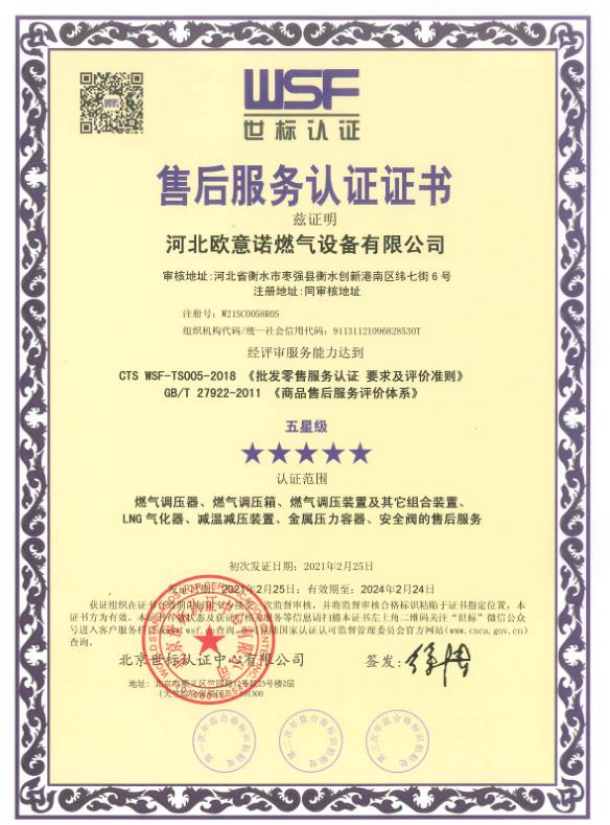
Nov . 08, 2024 22:29
Back to list
Design and Efficiency Considerations for Modern Heat Exchangers in Industrial Applications
Understanding Heat Exchangers Principles and Applications
Heat exchangers are crucial devices that facilitate the transfer of thermal energy between two or more fluids, which can be in direct contact or separated by a solid wall to prevent mixing. These devices play an essential role in a wide range of industrial processes, HVAC (heating, ventilation, and air conditioning) systems, and even in everyday appliances, such as radiators and refrigerators. This article explores the fundamental principles behind heat exchangers, their various types, and applications across different sectors.
Principle of Operation
Heat exchangers operate based on the principle of thermal conduction. When two fluids at different temperatures come into contact, heat transfers from the hotter fluid to the cooler one until thermal equilibrium is reached. The efficiency of this process is greatly influenced by factors such as the temperature difference between the fluids, the surface area of the heat exchanger, the flow arrangement of the fluids, and the type of fluids involved.
To maximize heat transfer, heat exchangers are designed to have a large surface area relative to their volume. This is often achieved through the use of extended surfaces, such as fins or tubes, which increase the contact area between the fluids. Additionally, the arrangement of the fluids can significantly affect performance. Common flow arrangements include counterflow, parallel flow, and crossflow, each with its specific applications and advantages.
Types of Heat Exchangers
Heat exchangers come in various designs tailored to suit specific needs. The most commonly used types include
1. Shell and Tube Heat Exchangers Consisting of a series of tubes, where one fluid flows through the tubes and another fluid flows around them within a larger shell, these are commonly used in large industrial applications due to their robustness and efficiency.
2. Plate Heat Exchangers Made up of multiple thin plates stacked together, these exchangers allow fluids to flow in alternating channels between the plates. They are compact, efficient, and easy to clean, making them popular in food processing and HVAC applications.
3. Air-Cooled Heat Exchangers These use air to cool or heat a fluid through finned surfaces. Commonly found in outdoor units of air conditioning systems, air-cooled heat exchangers eliminate the need for cooling water.
4. Double-Pipe Heat Exchangers This design consists of one pipe inside another, where hot and cold fluids flow in opposite directions. They are simple to fabricate and typically used for smaller applications.
heat exchanger

5. Spiral Heat Exchangers Featuring a spiral configuration, these exchangers maximize heat transfer in a compact design, making them suitable for applications with space constraints.
Applications
Heat exchangers are employed in numerous sectors, each with unique requirements and operational conditions
- Chemical Processing In chemical plants, heat exchangers are vital for various processes, including distillation, condensation, and heating of chemical reactions.
- Power Generation They play a key role in steam power plants, where they aid in heat recovery and improve overall efficiency.
- HVAC Systems In residential and commercial buildings, heat exchangers are central to heating and cooling systems, ensuring a comfortable indoor climate while minimizing energy costs.
- Food and Beverage Industry Used in pasteurization and refrigeration processes, heat exchangers help maintain product quality while ensuring safety.
- Automotive Industry Radiators in vehicles are a form of heat exchanger, crucial for managing the engine temperature and ensuring efficient operation.
Conclusion
Heat exchangers are an integral component of many industrial processes and systems, contributing to energy efficiency and sustainability. By facilitating effective heat transfer, they play a pivotal role in reducing energy consumption and operating costs across various applications. As technology advances, the design and efficiency of heat exchangers continue to improve, paving the way for more innovative solutions in the face of global energy challenges. Understanding their principles and applications allows engineers and operators alike to harness their potential effectively, making them indispensable in modern engineering processes.
Next:
Latest news
-
Safety Valve Spring-Loaded Design Overpressure ProtectionNewsJul.25,2025
-
Precision Voltage Regulator AC5 Accuracy Grade PerformanceNewsJul.25,2025
-
Natural Gas Pressure Regulating Skid Industrial Pipeline ApplicationsNewsJul.25,2025
-
Natural Gas Filter Stainless Steel Mesh Element DesignNewsJul.25,2025
-
Gas Pressure Regulator Valve Direct-Acting Spring-Loaded DesignNewsJul.25,2025
-
Decompression Equipment Multi-Stage Heat Exchange System DesignNewsJul.25,2025

